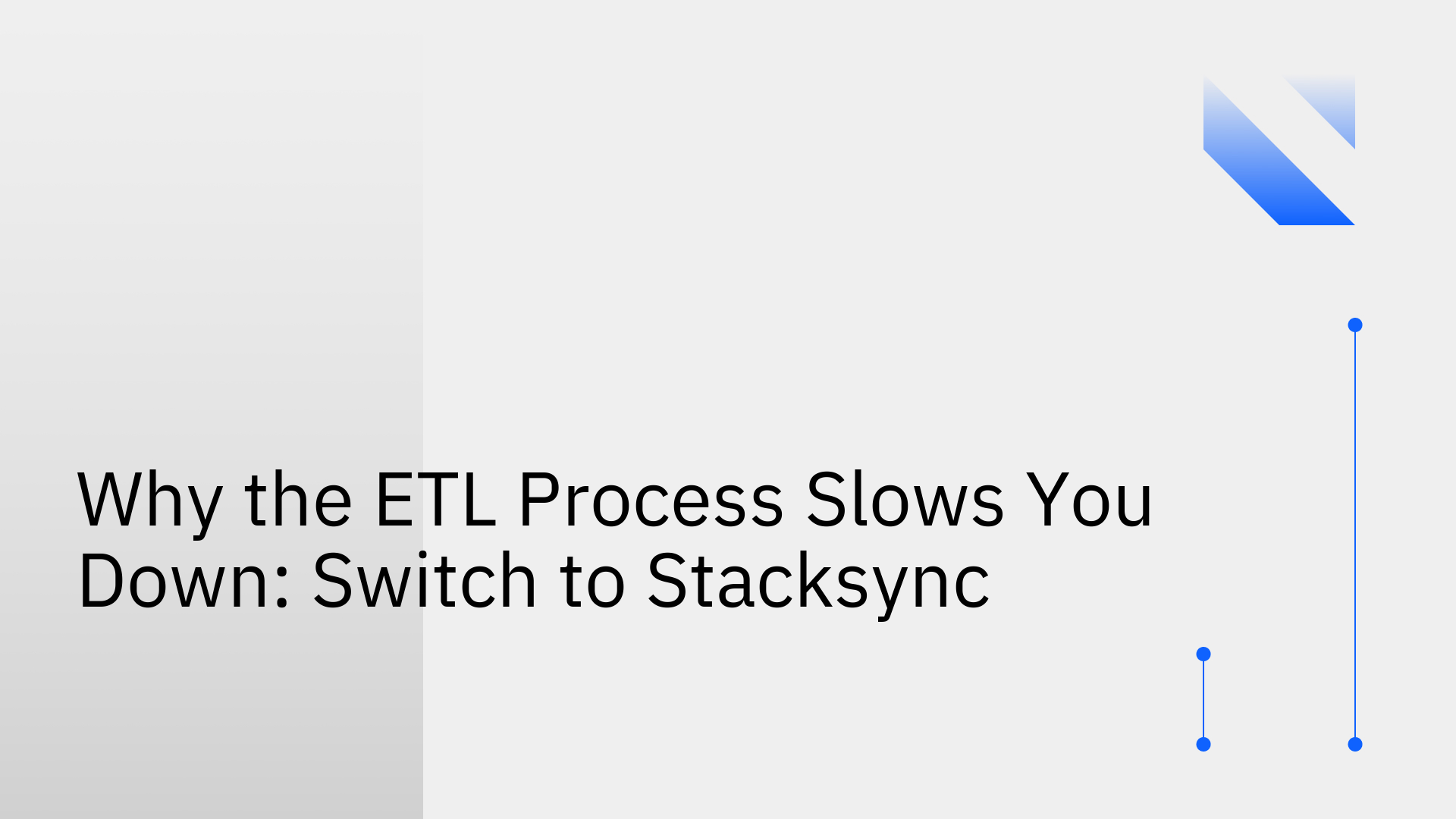
The Extract, Transform, Load (ETL) process has long served as a foundational method for data integration, primarily used to move data into warehouses for analytics. While this standard has been effective for decades, its batch-oriented nature has become a significant bottleneck for modern, data-driven businesses that require real-time insights. In today's competitive landscape, waiting hours or even days for critical data is no longer a viable strategy.
This article will explore the inherent limitations of the traditional extract transform load process and present Stacksync as a superior, real-time alternative engineered for operational speed and business agility.
At its core, ETL is a three-step data pipeline designed to consolidate data from multiple disparate sources into a single, centralized repository, creating a flow of Extract -> Transform -> Load.
This initial stage involves pulling raw data from a variety of sources, such as SQL or NoSQL databases, SaaS applications like Salesforce and HubSpot, and other proprietary systems. However, this step can become an immediate bottleneck if data retrieval is inefficient due to slow sources or unoptimized queries [1].
During the transformation stage, the extracted data is cleaned, validated, standardized, and restructured in a staging area to conform to the target system's format. This is often the most resource-intensive and time-consuming part of the entire ETL process, as it can involve complex joins, aggregations, and calculations that demand significant processing power [2].
The final step is loading the structured, transformed data into its destination, which is typically a data warehouse or data mart. Even this final stage can be slow if the target system is not properly optimized for handling bulk write operations, further delaying data availability.
The inherent, sequential structure of the extract transform load process leads to several critical performance issues that directly hinder business agility and slow down decision-making.
Traditional ETL operates in scheduled batches, often running only once per day or, at best, hourly. The direct consequence is that business teams are forced to work with stale data, leading to delayed decisions, inaccurate reporting, and missed operational opportunities [3]. This stands in stark contrast to the pressing need for immediate data in modern operational use cases for sales, marketing, and customer support teams who must act on information as it happens.
ETL pipelines are notoriously fragile and require skilled developers to build and maintain them [4]. They are prone to breaking whenever there are changes in data source schemas, APIs, or business logic, demanding constant monitoring and manual intervention from engineering teams to fix failures [5].
The complex transformations required by ETL consume significant computational resources, which can slow down the entire data pipeline and strain infrastructure. Optimizing these transformation jobs is a continuous and challenging task, often requiring expensive hardware upgrades or system overhauls just to maintain performance as data volumes grow [6].
As data volumes grow, they can quickly overwhelm existing ETL infrastructure, leading to severe performance degradation and longer processing times. External factors like network latency can also contribute to slow data transfer speeds, adding yet another bottleneck to an already lengthy process [7]. While the ELT (Extract, Load, Transform) model addresses some transformation bottlenecks by loading raw data first, it does not solve the core issue of data latency for operational needs and still relies on batch processing [8].
Stacksync is the modern alternative engineered to overcome the limitations of the traditional extract transform load process. We empower businesses to move beyond batch processing and adopt an "always-on" strategy built on fast, bidirectional data flows.
Stacksync syncs data in milliseconds, completely eliminating the data latency inherent in batch ETL. Our platform enables a true two-way, bidirectional sync, which means data can flow not only from your apps to a warehouse but also back into your operational tools like CRMs and ERPs. This empowers your teams with the freshest data directly where they work, enabling powerful real-time ETL and Reverse ETL use cases without the wait.
In stark contrast to the brittleness of traditional ETL pipelines, Stacksync offers a robust, managed, and scalable platform designed for operational excellence.
This focus on performance and reliability provides Stacksync with a clear advantage over top ETL and integration tools.
The difference between a legacy data pipeline and a modern sync platform is fundamental. This table summarizes why a comparison of real-time vs. batch performance is a critical distinction in 2025.
The traditional extract transform load process is no longer sufficient for businesses that need to operate and compete in real time. The built-in delays, high maintenance overhead, and one-way nature of ETL create a significant competitive disadvantage.
A modern data strategy requires more than simply pushing data out of a warehouse; it demands a full operational sync strategy to keep all systems aligned. Stacksync empowers your entire organization with the fast, reliable, and actionable data needed to stay ahead.
Ready to leave slow ETL behind? Book a demo with Stacksync today and unlock the power of real-time data synchronization.